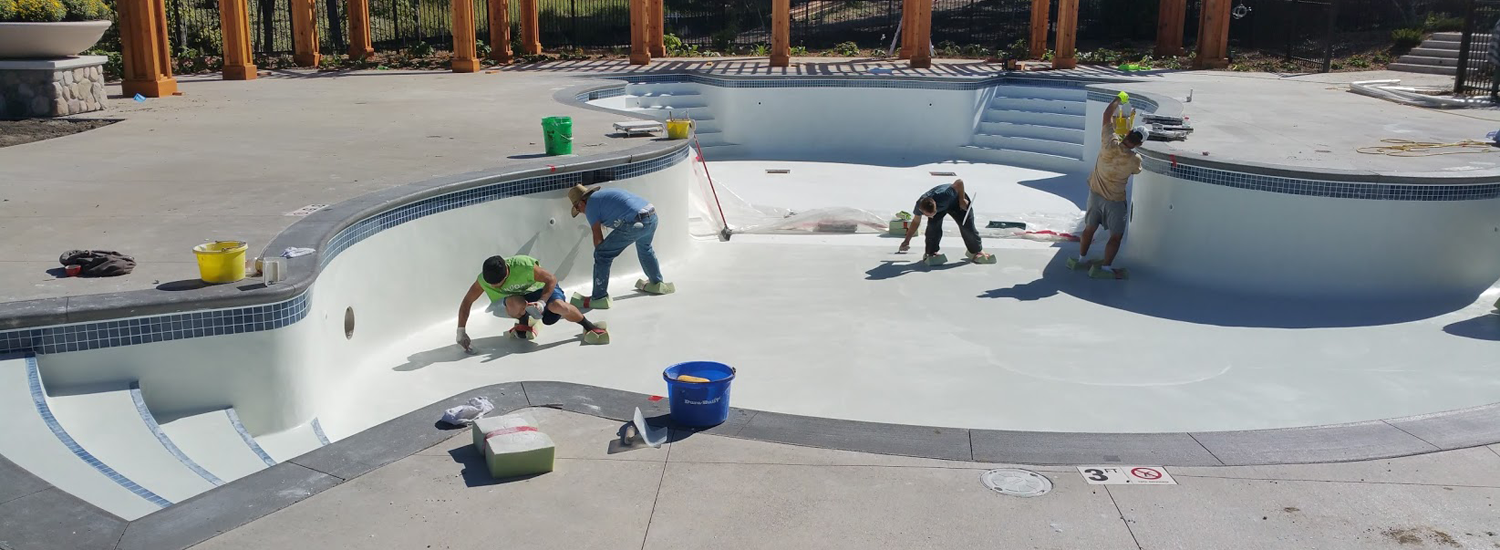Having a swimming pool is a luxury that brings joy and relaxation to your life. However, like any other part of your home, pools require regular maintenance and, occasionally, restoration to keep them in optimal condition. But how often should you consider pool restoration? In this blog, we will explore the factors that determine the frequency of pool restoration and provide guidelines to help you make informed decisions about your pool’s upkeep.
Signs That Your Pool Needs Restoration
The first step in determining the frequency of pool restoration is recognizing the signs that your pool requires attention. Common indicators of pool deterioration include cracks in the pool structure, fading or chalking of the pool’s finish, leaking water, uneven surfaces, and outdated pool equipment. Additionally, if you notice that your pool water balance is becoming difficult to maintain or that you’re spending an increasing amount of time and money on pool repairs, it might be time to consider restoration.
Pool Type and Material
The type and material of your pool play a significant role in determining how frequently it requires restoration. Concrete and gunite pools, for instance, are known for their durability but can develop cracks over time due to the settling of the ground. Fiberglass pools are less prone to cracks but may need resurfacing after many years. Vinyl liner pools may require liner replacement every 10 to 15 years. Knowing your pool’s material and its inherent characteristics is essential for planning restoration needs.
Climate and Weather Conditions
The climate and weather conditions in your area can have a substantial impact on the frequency of pool restoration. Pools in regions with extreme temperature fluctuations or harsh weather conditions, like freezing winters or scorching summers, may require more frequent restoration. Freeze-thaw cycles can cause structural damage, while prolonged exposure to the sun’s UV rays can lead to fading and surface deterioration. Understanding your local climate is essential for making informed decisions about pool maintenance.
Water Quality and Chemistry
The chemical balance of your pool water is crucial for its longevity. Pools with consistently poor water quality can experience damage to the pool’s interior and equipment. High levels of acidity or alkalinity can erode surfaces and corrode pool components. Regular water testing and maintenance to ensure proper pH, alkalinity, and chlorine levels can help extend the time between restoration needs.
Age of the Pool
The age of your pool is a significant factor in determining how frequently it will require restoration. Newer pools tend to have fewer issues and may only need minor maintenance for several years. However, as a pool ages, the wear and tear on the materials and equipment become more evident. The average lifespan of different pool types varies, and understanding the expected longevity of your pool can help you plan for restoration.
Water and Energy Efficiency
In recent years, there has been a growing focus on water and energy efficiency in pool maintenance. If your pool is older and lacks modern technology and equipment, you might consider restoration to update your pool with energy-efficient systems. This can include upgrading to variable-speed pumps, LED lighting, and solar heating options. Not only does this save you money in the long run, but it also reduces the environmental impact of your pool.
Lifestyle Changes and Aesthetics
Sometimes, the need for pool restoration is driven by lifestyle changes and a desire to improve the pool’s aesthetics. Perhaps you’ve outgrown the design or features of your pool, or you simply want to give it a fresh, modern look. In such cases, restoration can involve remodeling and upgrading the pool to align with your current preferences and lifestyle, even if the structural integrity is still intact.
Budget Considerations
Pool restoration can be a significant financial investment, and your budget is a crucial factor in determining how frequently you should consider it. The cost of restoration depends on the extent of the work needed, the materials used, and any additional features or upgrades. Evaluating your financial situation and setting aside a pool maintenance fund can help you plan for restoration as needed without straining your finances.
The frequency of pool restoration varies from one pool to another based on factors such as pool type, climate, age, and water quality. Recognizing the signs of pool deterioration and staying proactive with regular maintenance can extend the time between restoration needs. Ultimately, the decision to restore your pool should be based on a combination of these factors, your personal preferences, and your budget. By understanding the unique characteristics of your pool and your specific circumstances, you can make informed choices to keep your swimming pool a source of joy and relaxation for years to come. Still not sure your pool needs restoration? Contact Temptation Pools Inc., your pool construction company that specializes in pool construction, restoration and renovation in Miami.





